Sacramento’s Other Thiebaud Murals
Raquel Urbani
October 17, 2020
This winter, internationally-renown California artist Wayne Thiebaud turns 100 years old. The Crocker Art Museum just opened a thorough retrospective of his work, in celebration of his birthday.
One of the most prolific living artists of the 20th Century is still residing and creating, right here in Sacramento. A self-taught artist, Wayne Thiebaud went to college for a commercial art degree, transitioned to fine art, and started teaching in his twenties in an era when modern art was definitely still a touchy subject.
In 1959, while in his mid-thirties, Wayne was commissioned to create an expansive tile mural for a new headquarters building our firm designed in Sacramento. That mural, “Water City,” (shown below) is completely representative of his early works. It is still his largest work to date, but it wasn’t his first mural.
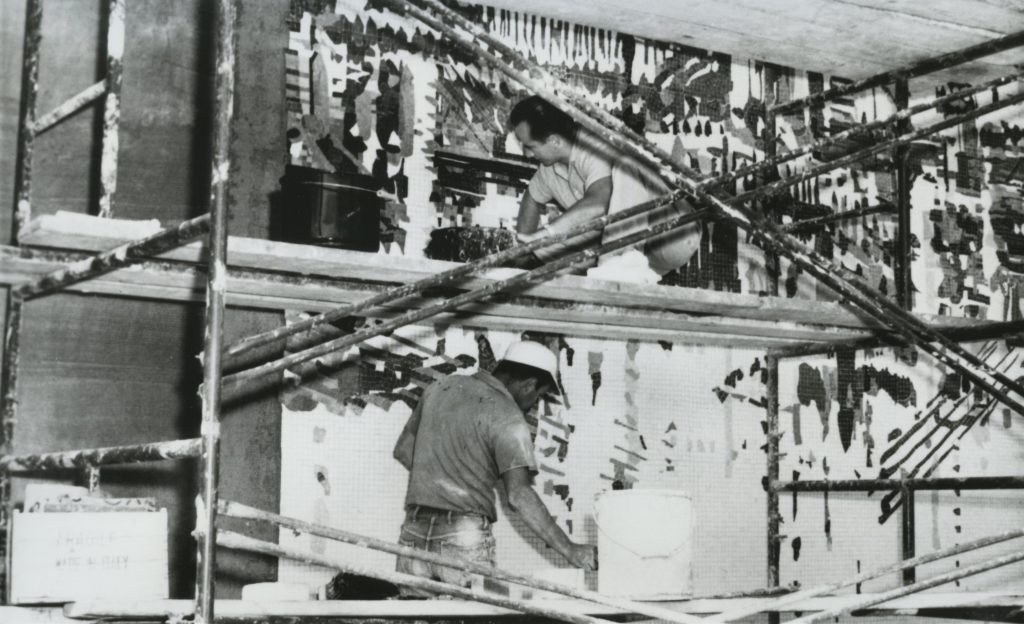
Back when the California State Fair used to be at the old fairgrounds in East Sacramento, there was a large and very well-curated art exhibit with a full printed compendium of the pieces on display. I actually have most of them from the 1950s.
From 1950 to 1959 Thiebaud worked with exhibit supervisor, Grant Duggins, to bring the State Fair Art Show to life for the masses. Each year they tried to go bigger and better. To draw crowds in, he would create specific large pieces and then have his art students help with the installations; in some years that included sculptures, fountains and murals.
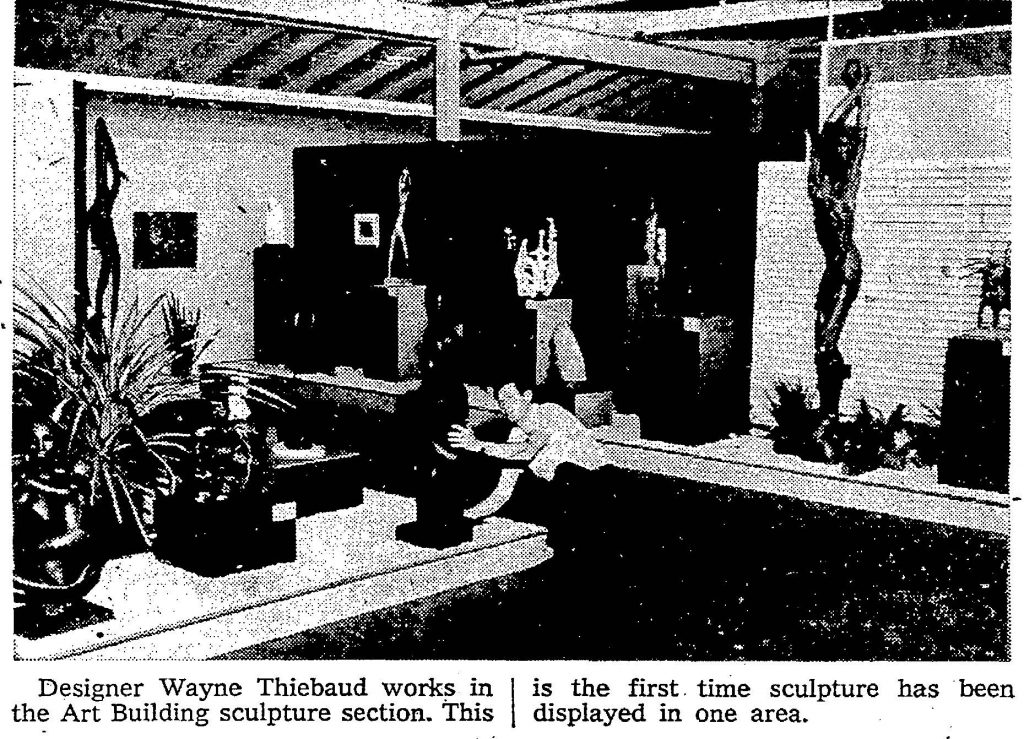
In 1952, there was an other-worldly water mobile, “Water at Play,” Wayne created with the help of another local artist, Jerry McLaughlin. Water spun and spurted out of the different moving objects while colors, lit from below, danced through. It was one of the most-written-about pieces at the fair that year and even managed to get a spread in Arts & Architecture Magazine’s October issue.
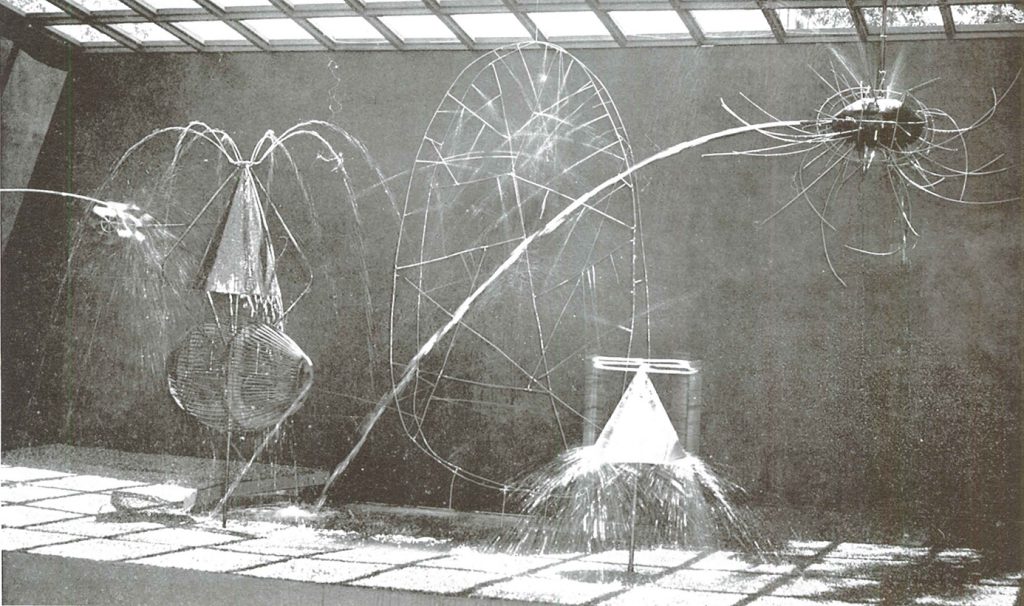
Two years later for the art show, Wayne created his first of a handful of murals for the fair. The subject was a playful riff on art patrons with hand-drawn people observing, admiring and in some cases inspecting different types of art and design. There is one outlier though, what looks like a magician about to saw a lady in half – although it could also be a judge rejecting an art proposal. You decide!
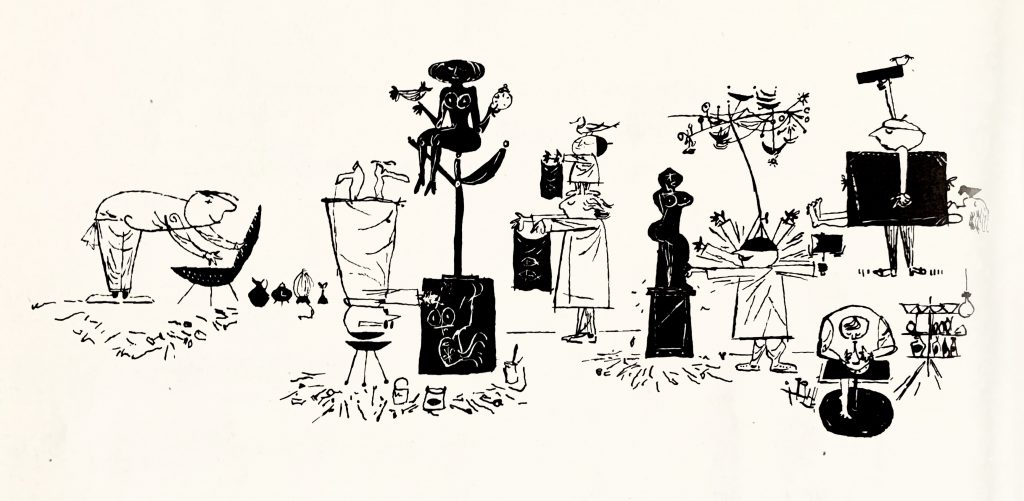
This mural was done in black and white rubber-based paint and was created for the 1954 State Fair specifically. It was on display on the wall outside the entrance to the Arts Building where the show was held, and served as a directional sign to usher people inside the building.
A large photo of it was published in the Sacramento Bee as a must-see advertisement for the art exhibit. The mural was also included in the Fair’s 1954 Art & Photography compendium, although it was uncredited. Curiously, the version printed in the compendium does not include the word “REJECTED” on the instrument the “magician” is holding. It is showing later in the newspaper review’s write-up for the exhibit though.
In 1957 another black and white mural was created for the art exhibit. This one looked stylistically closer to his early paintings, and was painted with the help of his former students who became well-known artists themselves: Mel Ramos, Gregory Kondos, Jack Ogden and Patrick Dullanty.
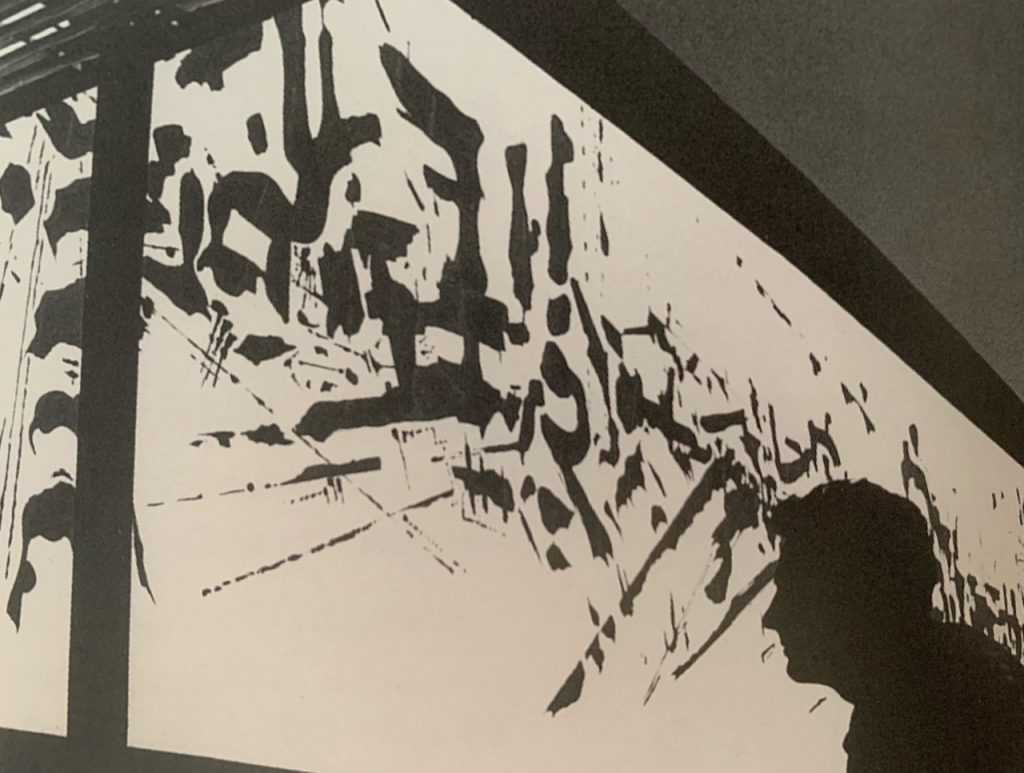
Curious as to what happened to the murals – there were about six total – I asked Wayne where they ended up after the fair was over. I was sure they were given to people who really wanted them. He said they were painted directly onto the building and then painted over each year after the fair was over. Once the fair itself moved to CalExpo, most the fairground buildings were eventually demolished along with any real indication that the murals ever existed.
Even though this news was not what I was expecting, I remembered I could always go visit his largest mural, which will always be there – and was recently meticulously restored as part of a larger rehabilitation effort we completed last year for the SMUD Headquarters. Even sixty years later, Water City can still be easily found.
Wayne Thiebaud and exhibit supervisor Grant Duggins, gifted California with a legacy of art exhibits to be proud of. Their foundational efforts to bring art in all its forms to the State Fair each year gave recognition and prominence to artists from both northern and southern California that would not have otherwise had the opportunity. Their influence continues to this day at the California State Fair Art Exhibits.